iPhone 4 Models • iPhone 5 Models
iPhone 6 Models • iPhone SE
iPhone 7 Models • iPhone 8 Models
iPhone X Models • iPhone 11 Models
iPhone SE (2nd Gen) • iPhone 12 Models
iPhone
iPhone 3G
Release Date: July 11, 2008
iPhone 3GS
Release Date: June 19, 2009
With the iPhone 3GS, Apple added a 32 GB storage option that's twice as large as its first one. It was clear that the introduction of the App Store had changed this very quickly. Sixteen GB wouldn't have been sufficient for photos, music or apps. The camera's been upgraded to 3MP and a video recorder has been installed. Even if we had waited a few more years before the introduction of Siri, Apple has added Voice Control.
iPhone 4
Release date: June 24, 2010
iPhone 4S
Release Date: October 14, 2011
iPhone 5
Release Date: September 21, 2012
Apple sold 5 million units of the iPhone 5 in its first week. The camera stayed the same but memory was boosted all the way up to 1 GB. You thought 3G was cool? Psh, the iPhone 5 had LTE connectivity. Hello, internet everywhere! Apple also introduced the Lightning connector with the iPhone 5. And for the first time, the screen got bigger! All previous generations' displays were 3.5 inches, but the iPhone 5 was 4 inches.
iPhone 5s & iPhone 5c
Release Date: September 20, 2013
Between the iPhone 5s and the iPhone 5c, Apple sold nine million units in the first week of sales. The iPhone 5c was meant to be slightly more affordable and had a plastic shell. It was available in four different colors, but not too much else was different. The iPhone 5s, on the other hand, introduced Touch ID, dual flash, and slow-motion video. Plus, it included the M7 motion coprocessor, which opened a new realm of possibilities and also helped save battery life.
iPhone 6 & 6 Plus
Release Date: September 19, 2014
iPhone 6s & 6s Plus
Release Date: September 19, 2015
The 6s changed everything. Well, not everything; it basically looked the same. But inside, Apple upgraded the iPhone 6s quite a lot. The camera made a huge leap forward going from 8MP to 12MP. The memory was also doubled from 1 GB to 2 GB. After the iPhone 6 had some bending issues (#bendgate), Apple gave the iPhone 6s 7000 series aluminum to make sure that never happened again. Last but not least, 3D Touch was introduced.
iPhone SE
Release Date: March 31, 2016
Don’t think I’ve forgotten the iPhone SE. It had all the awesome internal specs of the iPhone 6s in a small package and without 3D Touch. But overall, the iPhone SE was introduced as a more affordable option that people really loved.
iPhone 7 & 7 Plus
Release Date: September 16, 2016
iPhone 8 & 8 Plus
Release Date: September 22, 2017
The iPhone 8 and 8 Plus introduced us to wireless charging with the glass cover on the back of the iPhone. The camera was awesome, with upgraded tools for editing and filtering our images. The true-tone display improved the viewing experience by automatically reducing blue-light exposure. Users eventually (mostly) got used to not having a headphone jack and began adapting to the wireless lifestyle. Apple stopped supporting updates for the iPhone 8 line once iOS 17 launched in September 2023.
iPhone X
Release Date: November 3, 2017
Skipping right over the iPhone 9, the iPhone X was released 10 years after the original iPhone. The iPhone X included an extra front-facing camera that let us take amazing selfies in Portrait mode. Sure, other iPhones let us take cool-looking photos, but the iPhone X included Portrait mode for the front-facing camera, and we fell in love at first aperture. Apple stopped supporting updates for the iPhone X once iOS 17 launched in September 2023.
iPhone XS & XS Max
Release Date: September 21, 2018
Apple announced the XS and XS Max at its September 2018 event in the Steve Jobs Theater. These models were well named, as they were definite upgrades along the lines of the iPhone X. Both models had the front-facing camera for Portrait-mode selfies. The displays were edge to edge, and it all looked great with the Super Retina HD display. The biggest upgrade might be the smallest; the A12 bionic chip increased the processing power while decreasing battery drain.
iPhone XR
Release Date: October 26, 2018
The iPhone XR was also announced at the September 2018 event but wasn't available right away. Because it was the cheaper of the new models, quite a few people decided to wait for the XR to be available. These iPhones were smaller than the XS and XS Max (but still bigger than the 7 and 8 Plus). The display was not as crisp as the XS and XS Max, but with the Liquid Retina HD display, the difference wasn't too noticeable. This model also had a front-facing camera and came in way more colors than the XS or XS Max.
iPhone 11
Release Date: September 20, 2019
The iPhone 11 was the least expensive of Apple's annual line at the time, but still had enough new features to be in the running for 2019's most popular iPhone. The device features a 6.1-inch Liquid Retina display, and comes in six crisp colors. The most exciting addition may have been the second camera on the back of the 11, both 12MP, and offering wide and ultra-wide lenses.
iPhone 11 Pro
Release Date: September 20, 2019
For Apple customers looking for a smaller phone with a top-of-the-line display, the iPhone 11 Pro was perfect. The 5.8-inch Super Retina XDR display was Apple's most crisp and clear to date. This phone featured not two, but three, 12 MP HDR camera lenses, offering wide, ultra-wide, and telephoto lenses. The color options were more muted than the iPhone 11, but there was always the option to add a flashy case!
iPhone 11 Pro Max
Release Date: September 20, 2019
Apple's largest and most expensive phone of 2019 was the iPhone 11 Pro Max. The display was Apple's Super Retina XDR, as with the 11 Pro, but sized at 6.5-inches. The Pro Max featured the same, three-lens camera setup as the 11 Pro, as well as the same color choices, making size nearly the only difference between the devices.
iPhone SE (second-generation)
Release Date: April 24, 2020
The 2020 iPhone SE is the second of its kind and was loved by those who prefer smaller iPhones. Apple took a few cues from the past with this throwback iPhone. The 4.7-inch Retina HD display and Home button with Touch ID harken back to the original iPhone SE, and with a similarly low price. The second-generation SE offered many of the features of Apple's most expensive iPhones, including an A13 Bionic chip, advanced camera system with Portrait mode and Depth Control, high-definition video, wireless charging capability, and long battery life.
iPhone 12 mini
Release Date: November 13, 2020
The iPhone 12 mini was a surprisingly small but still very powerful addition to the iPhone family. This thin and incredibly light smartphone measured just 5.4 inches and included the new, powerful A14 Bionic chip for a considerable boost in performance over previous models. It also featured Apple's latest Super Retina XDR OLED display and a host of camera upgrades, but still came with a dual-lens arrangement. The only notable differences between the iPhone 12 mini and the iPhone 12 were that the mini was smaller and had an estimated battery life that's two hours shorter than that of the larger iPhone 12.
iPhone 12
Release Date: October 23, 2020
The 6.1-inch iPhone 12 had exactly the same features, camera specs, and processing capabilities as the 12 mini, except that it was estimated to have a 17-hour video playback compared to the iPhone 12 mini's 15 hours. This mid-range model also included the dual-lens camera, which was good enough for everyday users. However, Apple did include some impressive upgrades to their higher-end iPhone 12 Pro and Pro Max phones for those who chose their iPhones for their camera capabilities,
iPhone 12 Pro
Release Date: October 23, 2020
The iPhone 12 Pro boasted some very fancy camera and color upgrades as compared to the 12 and the 12 mini, but came in the same 6.1-inch screen size as the iPhone 12 and included all of the baseline features present in the budget models. New camera features introduced in 2020 include a triple-lens arrangement like we saw with the iPhone 11 Pro models, but with LiDAR scanning, improved Night Mode, and enhanced zoom range and lens functions. Both iPhone 12 Pro models included the fastest aperture ever used in an iPhone. Apple added RAW photos for superior pro editing capability and included Dolby Vision up to 60 frames per second in the Pro models.
iPhone 12 Pro Max
Release Date: November 13, 2020
The iPhone 12 Pro Max, featured all of the benefits of the 12 Pro, but with some upgrades and a considerable size difference. The 6.7-inch Pro Max claimed an 87 percent improvement in the way it functions in low light over the iPhone 11 models and features 5x zoom, which was a big deal for those who use their iPhones for professional or near-professional photography projects. The most distinguishing characteristic of this iPhone was its screen size.
iPhone 13
Release Date: September 24, 2021
The iPhone 13 line's base model maintains many of the design features (re-)introduced in the iPhone 12 series, but it also comes with a 20 percent smaller notch, accommodated by a new camera layout. It runs on the A15 chip, which is an upgrade over the previous generation of iPhones, and the camera features some significant improvements, including Cinematic mode and Photographic Styles. Battery life is also improved for this model, and it comes in the following colors: pink, blue, midnight, starlight, and PRODUCT(RED). A big selling point for the iPhone 13 is the price point: it starts at the same price as the iPhone 12 did when released, but its base model offers double the storage space. The screen size remains the same at 6.1 inches.
iPhone 13 mini
Release Date: September 24, 2021
Like its bigger siblings, the iPhone 13 mini runs on Apple's A15 Bionic chip, making it a powerhouse in a small package. Its battery life has improved up to an hour and a half a day over the iPhone 12 mini. As with other iPhone 13 models, the mini features big camera improvements, and the most storage available of any mini model at a maximum storage capacity of 512 GB. Its design and physical size also largely mirror the iPhone 12 mini, clocking in with a screen size of 5.4 inches. It features the same color options as the iPhone 13 and a starting price of $699 for 128 GB.
iPhone 13 Pro
Release Date: September 24, 2021
The iPhone 13 Pro features a 6.1-inch Super Retina XDR display with ProMotion, but its big draw is the inclusion of a Telephoto camera, in addition to the Wide and Ultra Wide cameras that come with the iPhone 13 and iPhone 13 mini. It comes with a LiDAR scanner for Night Mode photography and offers a 1 TB model for more storage than any iPhone has ever offered before. It needs it, considering all the new camera features make for pretty bulky file sizes. It is also powered by the A15 chip and comes in silver, graphite, gold, and sierra blue.
iPhone 13 Pro Max
Release Date: September 24, 2021
The iPhone 13 Pro Max offers everything the Pro does, but bigger. Its screen is the same size as the iPhone 12 Pro Max: 6.7 inches diagonally. It, like the rest of the iPhone 13 line, is a bit heavier and thicker than its predecessor, despite sharing the same dimensions otherwise. In addition to getting a chip upgrade to the A15, the iPhone 13 Pro Max also gets an additional GPU, for a total of five. It, too, offers a 1 TB storage capacity option, and Apple says the battery is able to support up to 28 hours of non-stop video playback. With the heftiest price tag of any iPhone, the iPhone Pro Max is the ultimate top-of-the-line model available.
iPhone SE (third-generation)
Release Date: March 8, 2022
The 2022 iPhone SE 3 is the third of its kind. It maintains the 4.7-inch Retina HD display and Home button with Touch ID, which harken back to the original iPhone SE, and with a similarly low price. The third-generation SE offers many of the features of Apple's most expensive iPhones, including 5G, an A15 Bionic chip, an advanced camera system with Portrait mode, Depth Control, high-definition video, Deep Fusion, wireless charging capability, and long battery life.
iPhone 14 & 14 Plus
Release Date: 14 - September 16, 14 Plus - October 7 2022
Instead of the iPhone mini, Apple brought the Plus back for iPhone 14, with the slightly larger display that had been restricted to the exclusive Pro and Pro Max models in recent years. The iPhone 14 models came with some impressive safety-focused features, including Crash Detection (which automatically detects a car wreck and contacts emergency services in the event of a crash) and Emergency SOS via satellite, a feature with the capability to connect to emergency services via satellite if you find yourself in distress while out of range of Wi-Fi or cellular. The Emergency SOS via satellite is a first in the smartphone arena, since connecting to a satellite was previously only possible through bulky expensive devices built specifically for this purpose. The iPhone 14 & 14 Plus also offers a new dual-camera system, designed to take low-light photography to the next level (goodbye, grainy nighttime photos!).
iPhone 14 Pro
Release Date: September 16, 2022
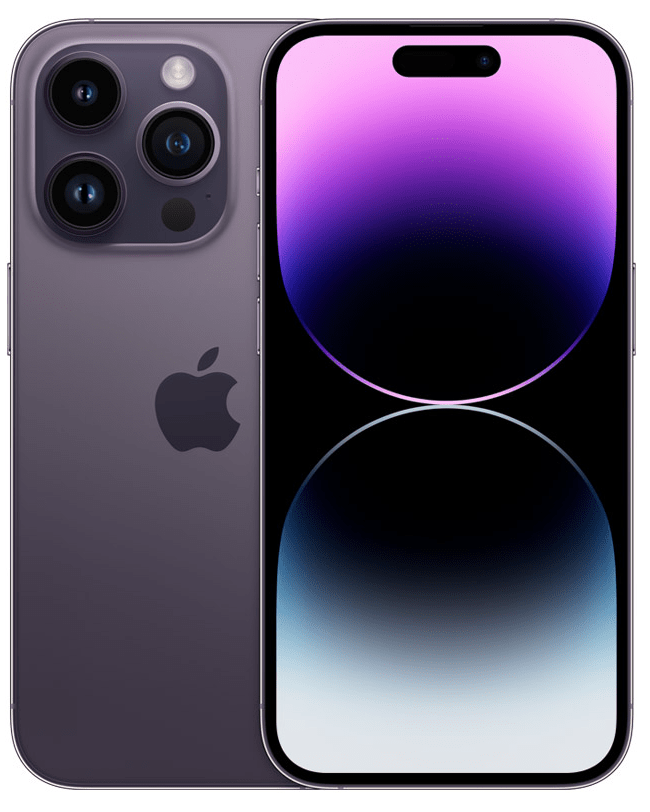
Similar to the iPhone 14 base model, the 6.1" iPhone 14 Pro debuted with the same Crash Detection and Emergency SOS via Satellite safety features. In addition to the new A16 Bionic chip, it also got a surprising upgrade, with a new "Dynamic Island" feature where the notch used to be. While the notch isn't gone, it now adapts to whatever you are doing to more seamlessly display notifications and background activities. It also featured an Always-On display, made possible by low-energy components, so that the time and widgets on your lock screen are always viewable. In perhaps the most impressive update, the iPhone 14 Pro and Pro Max offer a 48 MP camera (a sharp jump from the 12 MP camera offered by the previous model). This translates to a more flexible camera, with more options for framing and cropping, as well as better low-light shots so you can worry less about the lighting and more about capturing the moment.
iPhone 14 Pro Max
Release Date: September 16, 2022

Its screen is the same size as the previous Pro Max generation: 6.7 inches diagonally. As expected, the iPhone 14 Pro Max has the same upgrades the other iPhone 14 models had, including the Always-On display, Dynamic Island, A16 chip, Emergency SOS via Satellite, Crash Detection, and the impressive 48 MP camera. It also offered a staggering 29-hour video playback battery life and the brightest and clearest display of any iPhone ever. With the new 48 MP camera, you won't want to stop taking photos, as this camera helps you to capture more colors, textures, and detail than ever before!
iPhone 15 & 15 Plus
Release Date: September 12, 2023
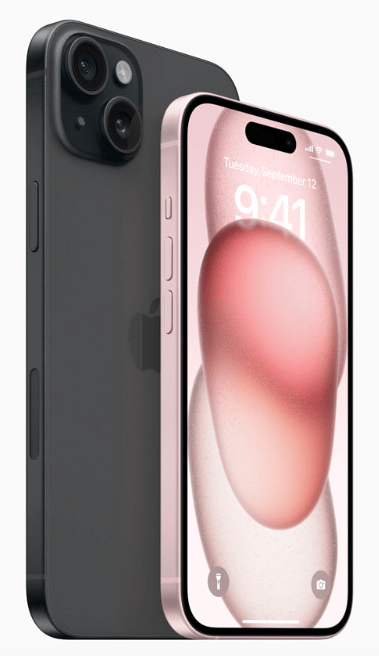
The new iPhone 15 and 15 Plus were recently unveiled at Apple's September 12 event. These models feature the same 6.1 and 6.7" Super Retina XDR displays as the iPhone 14 and 14 Plus, but the 15 and 15 Plus come with a new feature: color-infused glass backs. The iPhone 15 and 15 Plus have also added the Dynamic Island, only available in the iPhone 14 Pro and Pro Max last year. Both models feature a USB-C, rather than a Lighting port.
The iPhone 15 and 15 Plus also have a chip upgrade, moving up to the A16 Bionic Chip. The Advanced dual-camera system now features 48MP, Super-high-res photos, and Next-gen portraits with Focus and Depth control on both models. Also included are important safety features like Crash Detection and Emergency SOS via satellite.
iPhone 15 Pro
Release Date: September 12, 2023
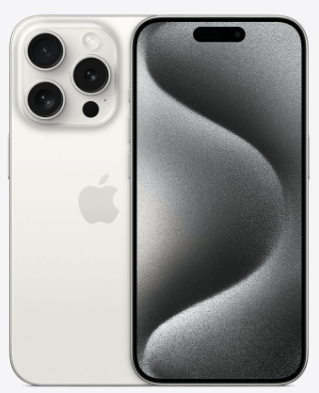
The new iPhone 15 Pro was recently unveiled at Apple's September 12 event. New features of Apple's latest iPhone model include a titanium frame, USB-C port, and the brand new Action button. The Action button turns the Ring/Silent switch into a customizable button that can activate the camera, turn on the flashlight, set Accesibility options, change Focus modes, open a note, start a Voice Memo, and even run custom Shortcuts.
Similar to the iPhone 15 base model, the 6.1" iPhone 15 Pro offers Crash Detection and Emergency SOS via satellite safety features. The new A17 Pro Bionic chip allows for the best iPhone graphics performance to date (great for gaming), while the camera system now features next-generation portraits with Focus and Depth Control.
iPhone 15 Pro Max
Release Date: September 12, 2023
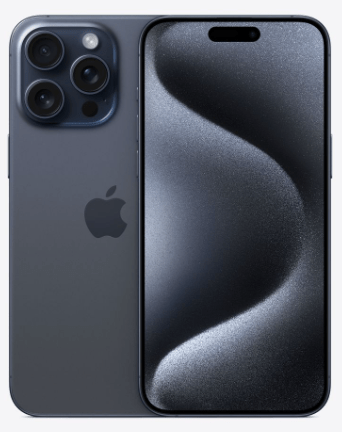
The new iPhone 15 Pro Max was unveiled at Apple's September 12 event. Just like the 15 Pro, the 6.7" iPhone 15 Pro Max includes a titanium frame, USB-C port, and Action button. The Pro Max also offers safety features, including Crash Detection and Emergency SOS via satellite safety features. The A17 Pro Bionic chip combined with its larger screen size allows for the best iPhone gaming performance to date, with less lag, more speed, and immersive, detailed graphics. The camera system now features next-generation portraits with Focus and Depth Control.
iPhone Generations to Come
Apple has released a total of 38 iPhones over the years (including the latest iPhone 15 models). We've given you a complete look at each iPhone evolution, starting when Steve Jobs unveiled the original iPhone in 2007. As you can see, the iPhone has gone through a lot of changes, from a 16 GB web browser to a 1 TB all-in-one camera, workspace, and entertainment center.
In the early days, Apple released one iPhone per year. That gradually changed as the releases of new models got closer and closer together from 2010 to 2013. With the September rollout, though, Apple released both the iPhone 5s and the iPhone 5c, ushering in an era of two iPhone releases per year. 2017, 2018, and 2019 each saw the release of three more iPhone models, and then in 2020 the tech giant shocked the world. Not only did it release the iPhone SE (second-generation) in April, the company also rolled out the four iPhones in the 12-series lineup in its delayed fall announcement.
At its September 2021 event, Apple revealed the four new phones that comprise the iPhone 13 lineup, then in March 2022 released the the iPhone SE (third-generation). However, in the September 2022 event, the iPhone 14 lineup had reverted to only three new phones, marking the end of the less popular iPhone mini. Apple released the exciting new iPhone 15 in September 2023 and moved back to the four-iPhone lineup, minus the mini.
We loved learning about the history of the iPhone over the years, and we hope you did, too! Be sure to check back in and stay up-to-date with all the newest models as the iPhone continues to evolve and grow. If you think it might be time for you to upgrade your iPhone to a newer model, check out our article on how to know when to upgrade your phone.
FAQ
- Why Did Apple Skip Some iPhone Numbers? Why Did Apple Skip Some iPhone Numbers? There isn't an iPhone 2 because after the first generation, the next iPhone featured 3G internet connectivity, so iPhone 3! Why did Apple skip iPhone 9? Apple went straight to the iPhone X because it was released ten years after the first iPhone release.
- When will the next iPhone come out? The iPhone 15 was announced on September 12, 2023, and begins shipping on September 22.
- Did the first iPhone have a camera? Yes, the first iPhone did, though not an especially powerful or clear one. Apple has shown a company initiative to continue improving upon iPhone cameras with each release. The newest iPhones offer incredible detail and professional-level finishing with the stock camera and photo editing options.
We hope this article answers any questions you have about the evolution of phones in Apple's lineup. This iPhone evolution chart will continue to grow over the years, and we'll be here to keep it updated: from the new iPhone 15 and beyond. Maybe in 2027, we'll even get an iPhone XX!You might also be interested to check out our article covering how to find your Apple Watch model, and how to know which AirPods you have, to see the evolution of the various generations over time.
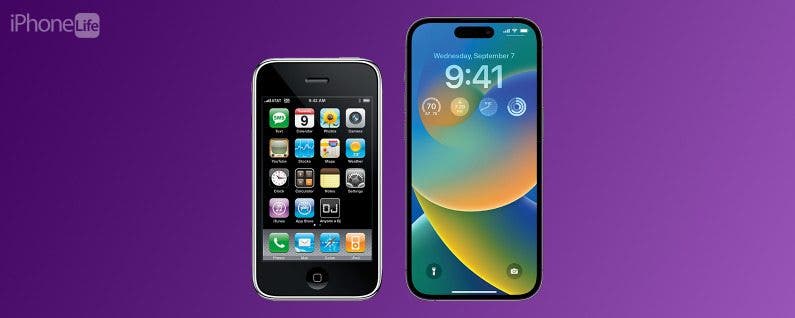
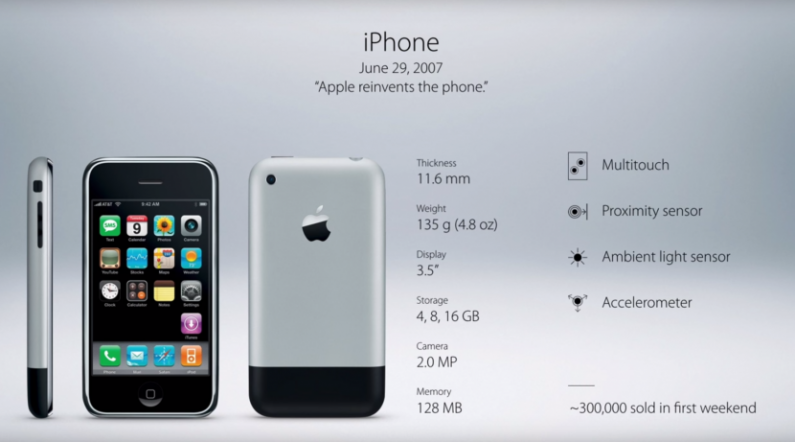
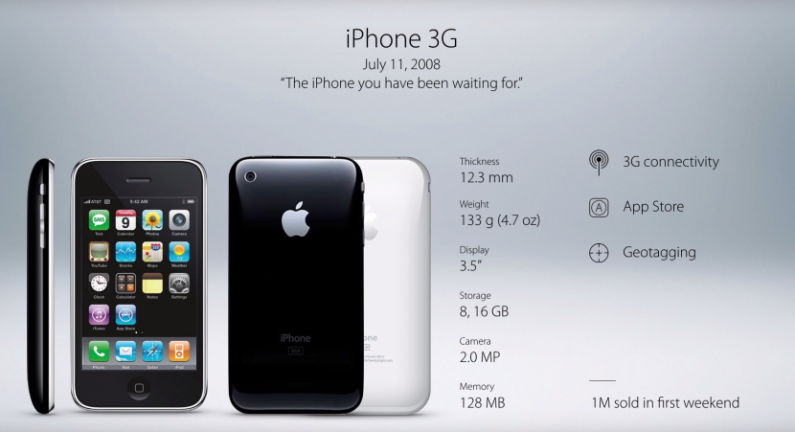
Comments